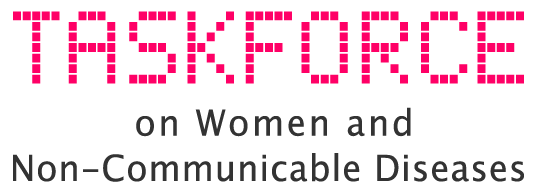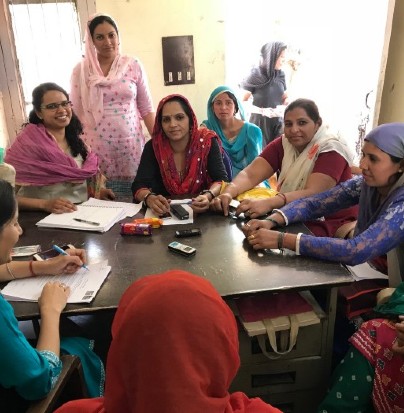All women have a right to affordable, quality health care. Yet in many low-income communities around the world, health care is only accessible to pregnant and postpartum women. Limiting care to the perinatal period is not only discriminatory; it means other major health conditions that occur across women’s lives are neglected, and ignores the reality that chronic diseases such as heart attack and stroke are the primary killers of women globally.
The United Nations High-Level Meeting on Universal Health Coverage on 23 September 2019 offers an opportunity for change. As other blogs in this series have emphasized, a healthier, more equitable future demands that we take a rights-based, life-course approach to women’s health.
One practical way we can do this is to use existing entry points to care, such as maternal health services, to expand service provision for chronic diseases, ensuring that women have a voice in developing new or revamped services that reflect their needs and support their dignity.
Technology has a critical role to play in this global health system transformation. With mobile phone penetration high across the Global South, health systems have an unprecedented opportunity to engage with patients. Among its many potential uses, technology can allow doctors to make virtual visits to patients in remote communities; provide algorithms that improve clinical decision-making among community health workers; and help women with gestational diabetes manage their own conditions.
The George Institute for Global Health is developing and evaluating digital solutions that can be integrated with existing and emerging health systems to promote women’s health equity. For example, the George Institute in partnership with the University of Oxford are currently piloting SMARThealth Pregnancy, which aims to improve the detection and management of non-communicable diseases such as hypertension, gestational diabetes and anemia, both during and after pregnancy, among women living in rural communities in India.
A healthier, more equitable future demands that we take a rights-based, life-course approach to women’s health.
In India, the percentage of pregnant women with gestational diabetes and high blood pressure is rapidly increasing. If left untreated, these conditions can harm the mother and baby immediately and in the long-term. Screening for these conditions in pregnancy therefore provides an opportunity to improve maternal and newborn health, as well as to reduce type 2 diabetes and heart disease risk later in life.
Across India, community health workers called ASHAs (Accredited Social Health Activists) provide basic health services, and may be the only link with the health system for women living in isolated communities. To improve the quality of care these women receive, the SMARThealth platform links devices to measure blood pressure, glucose levels and other indicators with a tablet-based algorithm that helps ASHAs identify and treat women at risk of chronic diseases. SMARThealth Pregnancy allows ASHAs to register women with high-risk medical conditions during pregnancy.
The George Institute are working in partnership with government, health providers, ASHAs and local women to design the platform and embed it into existing maternal health services, with women’s voices critical to this continued development.
SMARThealth Pregnancy is one example of a technology that can integrate chronic disease care with maternal health services in line with a life-course approach to women’s health. Through the ongoing development of this and other digital tools, the teams at The George Institute for Global Health in the UK and India, have learned that three key best practices are essential to ensure the clinical effectiveness, local acceptability, and technical and economical sustainability of digital health initiatives.

First, as with most public health interventions, digital tools must be co-designed with local health system stakeholders if they are to assist, rather than burden, existing workflows. These stakeholders should also be involved in training the health workforce in how to use the new tool. Moreover, digital platforms must be integrated into existing health systems to enable linkage of patient data collected on these platforms with regional health information systems.
Second, the intended end-users of digital tools must be involved in their development if the tools are to be user-friendly and engaging, and meet local health priorities. For example, anaemia was identified as a priority condition for local populations (Link to qualitative study available here).
Finally, although a plethora of digital tools have been developed, very few have been evaluated for their ability to transform health outcomes among women. We encourage health systems to employ only tools that are backed by evidence showing real-world, equitable benefits.
Co-designed, locally led digital interventions offer tremendous potential to expand quality care to women in isolated communities, in particular by integrating chronic disease care into maternal health services. They are not a replacement for investment into health infrastructure and the health workforce, but as the global community strives to accelerate progress towards universal health coverage, digital solutions represent a real opportunity to support efforts to fulfill the right of all women to access affordable, quality health care at every stage of their lives.
This blog was written by Dr Shobhana Nagraj and Alyssa Chase-Vilchez for The George Institute for Global Health.
This post was originally published on Medium




